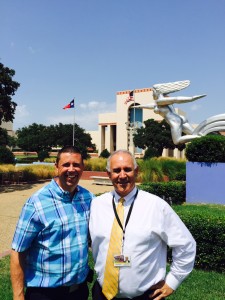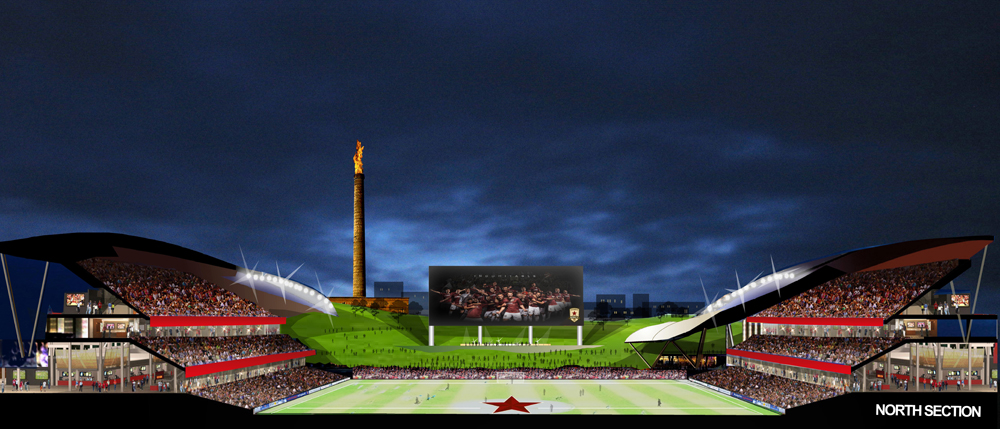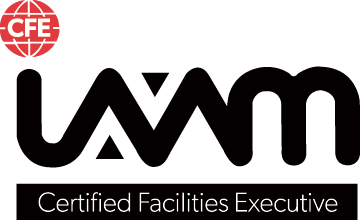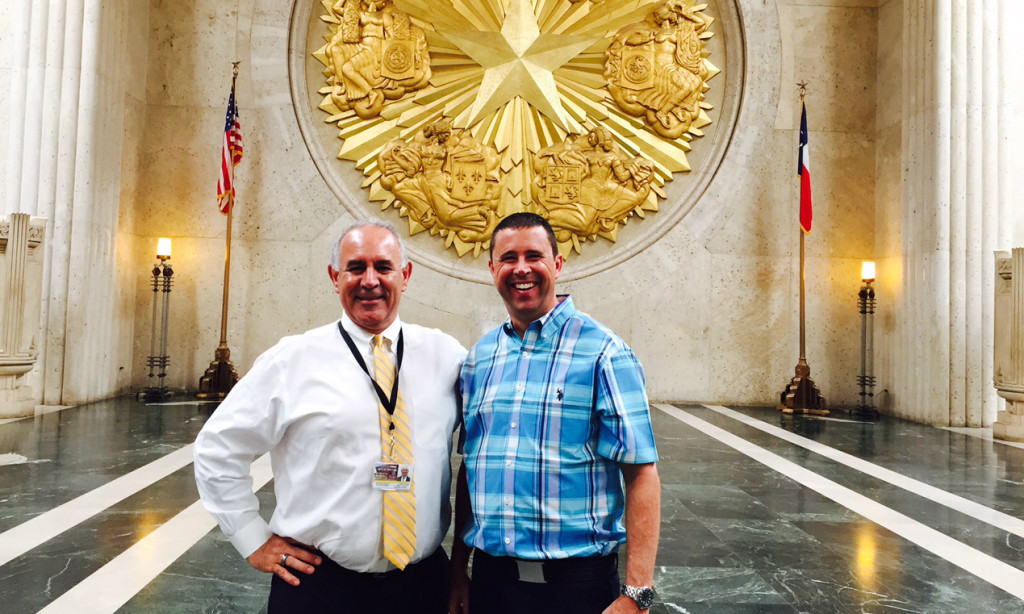Sacramento Releases Report on Downtown Soccer Stadium
Sacramento Republic FC currently plays in the United Soccer League, a minor league that would be comparable to AA baseball but the organization believes they are #BuiltForMLS. With attendance numbers over 10,000 on average, Sacramento is strongly pursuing an expansion franchise in Major League Soccer (MLS) as early as 2018 with a new downtown stadium.
With the support of Mayor Kevin Johnson and other city leaders, Sacramento FC recently released its “Critical Mass Report,” a new analysis of the estimated economic impact of the development of a new MLS stadium in downtown Sacramento. You can view the report here.
“The ‘Critical Mass Report’ makes clear that the significant private sector investment led by the Sac Soccer and Entertainment Holdings will accelerate the revitalization of downtown Sacramento by generating over $1 billion economic development over a 30 year period,” said Cathy Dominico, managing partner at the Capitol Public Finance Group.
With a strong campaign and private investments, I more than believe Sacramento is #BuiltForMLS as well.
(Images: Sacramento Republic FC)
Two New Country Festivals Announced
You’re going to love these festivals if you’re a country fan.
Next Memorial Day weekend (May 27-29, 2016), Daytona International Speedway will play host to the inaugural Country 500 music festival. Set to perform are Luke Bryan, Florida Georgia Line, Kid Rock, Lady Antebellum, Willie Nelson, and more. Tickets go on sale November 3.
“We’re proud to develop this new partnership with AEG Live and Festival Productions Inc. – New Orleans and bring the Country 500 music festival to Daytona International Speedway,” Track President Joie Chitwood III said. “Signature events such as the DAYTONA 500 and the Rolex 24 At Daytona have made DIS the ‘World Center of Racing’ but by securing this marquee music festival with an amazing lineup of artists, we will also be known as the ‘World Center of Entertainment.”
The acts will perform on stages specially designed and built for the festival, and the event will take place on the infield of the speedway. Fans can camp out in the infield, too. And yes, there will be meet-and-greets throughout pit road and in the garages.
The other country music festival, Dega Jam, will take place July 1-3, 2016, at Talladega Superspeedway in Alabama. Acts will be announced on October 25. Festival fans will also be allowed to camp out in the infield and have the opportunity to meet their favorite artists.
(Image: Facebook)
2016 CFE Application Due by Nov. 1, 2015
You may have taken the first step in the process toward becoming a CFE by attending the “How to Become a Certified Facilities Executive (CFE)” webinar on September 24, 2015, by completing the “CFE Checklist” to ascertain if you had earned the 300 points needed to make application and start the formal process, or perhaps this is the first time you have considered pursuing certification.
Now’s the time to take the second step and join that group of your peers who have reached the pinnacle of achievement with IAVM by becoming Certified Facilities Executives. Remember – Applications and three written references are due no later than Nov. 1, 2015.
The written essay is due by February 1, 2016 – allowing you extra time to enjoy the holidays and end of the year activities.
Don’t delay, apply today. Make 2016 the year that you earn your CFE!
The Mentor Connector Program—From a Mentee Perspective
Serving as the operations manager at the South Towne Expo Center located in Sandy, Utah, I am continually seeking ways to learn and grow personally and professionally. This isn’t just of personal benefit, as it further extends to our professional venue and our community. As a new member—and while browsing the IAVM website—I discovered that the association offered a mentoring program. The program is geared toward members seeking to learn more about venue management or have been in the venue management business and are willing to assist those that may just be starting out in the business.
I followed up with a call to the IAVM headquarters for additional details and learned that the Mentor Connector program started in 2007. This is only one of the benefits that come with being an IAVM member. I learned that there is an application process, and a committee reviews and attempts to match you with someone who is a good fit that can help you grow professionally. Mentors volunteer their time and service to the program, assisting the mentee with networking and achieving success with mutually established goals for the partnership. Each spring and fall, mentees are paired with mentors for a 12-month cycle based on similar interests. The partnership is also paired with a coach who oversees the partnership. In 2014, 68 mentors and mentees completed the program. I was immediately intrigued and came to the conclusion that the program would help me become a better professional.
In December 2014, I was matched with my mentor, Daniel Huerta, executive general manager of Fair Park in Dallas, Texas. Jody Lake was assigned as coach for our mentoring partnership. As I perused through the Mentor Connector handbook, I learned that it contained valuable information including roles and responsibilities of the mentee and mentor. Once I completed the partnership goal statement, spelling out what I sought to accomplish, it was time to reach out to Daniel to arrange the initial introductory call and to schedule subsequent calls. IAVM recommends committing to making time to meet on a regular basis, but no less than quarterly.
 Each month, Daniel and I are on a call to discuss several issues using a meeting record form that outlines the goals, documents discussion topics, identifies action items, and updates results. What I have found helpful is that during our monthly calls each of us describes what is currently happening at our respective venues, including what’s working and challenges we faced and their resolutions.
Each month, Daniel and I are on a call to discuss several issues using a meeting record form that outlines the goals, documents discussion topics, identifies action items, and updates results. What I have found helpful is that during our monthly calls each of us describes what is currently happening at our respective venues, including what’s working and challenges we faced and their resolutions.
Some of the best advice that I have received is how my mentor has handled difficult situations in the past that may be similar to challenges that I may be experiencing at my venue. I appreciate his candid responses and examples that he uses to describe past situations. One of his greatest leadership qualities is acknowledgement that sometimes even your best laid out plans don’t work, but you have to break things down to find out why it didn’t work and lessons learned. He shares some of the mistakes that he has made and how he learned from them so that I don’t make the same mistakes myself. Daniel has been a great resource and mentor to me by listening to what I have say and providing me suggestions and advice. He has demonstrated genuine interest in my growth and helping me achieve my professional goals.
Two of my SMART (specific, measurable, attainable, realistic, and timely) goals we established were to attend IAVM VenueConnect and to fly down to Texas to meet Daniel. IAVM recommends meeting your mentor, if at all possible. Both were accomplished, as I was fortunate to tour and experience his venue and operations, a 277-acre complex with exhibit halls, the historic Cotton Bowl Stadium, museums, a concert amphitheater, and other attractions. In addition to visiting Fair Park, which draws an impressive 5.2 million people a year, Daniel made arrangements with IAVM members Dave Brown and Paul Turner to tour their respective venues of American Airlines Center, home to the Dallas Mavericks and Dallas Stars, and AT&T Stadium, home of the Dallas Cowboys. I quickly realized that they, too, valued the goals of the IAVM Mentor Connector Program and committed to my professional interest and growth.
My participation in the Mentor Connector program has proven to be beneficial, uplifting, and rewarding. Similar to anything in life, you get out of the program what you decide to put into it (time, dedication, commitment, willingness to learn, etc.). I sought to learn from someone who has been in the industry several years and actively involved with IAVM. Daniel has achieved professional success in his career and has given many hours of volunteer service by serving on numerous IAVM committees. Always willing to listen and to provide sound advice, he is a wonderful and encouraging coach by motivating me to strive to achieve my full potential.
Experiencing firsthand the benefits the program has brought me in my career, I highly recommend the Mentor Connector program to anyone who is interested in furthering their career, increasing their knowledge, and seeking to grow personally and professionally.
Business Barometer April-June 2015: A Stable Marketplace
Mid-year conditions for most venue managers are steady compared to last quarter and the average of 2014. Sixty-five percent of industry professionals say that overall current business conditions are positive, comparable to 62 percent last quarter and 64 percent for all of 2014. This indicates a stable marketplace overall, except for arenas, which report a bit of positive news. Arena professionals seeing positive business conditions have increased by 17 percent since the first quarter—from 49 percent to 66 percent—and those indicating negative current conditions dropped from 23 percent to 16 percent. Compare this also to the 2014 averages of 56 percent positive conditions and 17 percent negative.
For the overall industry, business outlooks are also stable to positive, with a slight increase in those predicting net increases in business conditions for the coming year from 70 percent in Q1 to 77 percent in Q2—consistent with the 2014 average of 77 percent. And few (11 percent) are currently forecasting net decreases in the marketplace in general.
In the Seats
General attendance across venues reflects these steady business conditions, with half (51 percent) of professionals currently reporting increases in attendance, compared with the 2014 average of 54 percent. However, for this quarter, the trend seems to be toward flat attendance, with 30 percent of managers reporting level attendance compared to 18 percent in Q1. That said, outlooks are rosier for attendance than what current conditions show. More than two-thirds (70 percent) of venue professionals foresee increasing attendance in the months ahead, and this number has been consistent for months and is level with the average of expectations for all of 2014.
Money, Money, Money
Revenue dollars tell a similar story. Currently, 65 percent of venue managers say they are seeing a positive increase in net revenue, 21 percent say revenue is flat, and just 15 percent say numbers are down year-on-year. There includes a slight movement up to level quarter on quarter; in Q1 a full quarter of industry professionals reported decreases in revenue over 2014 numbers. For the next year, 70 percent of venue managers expect net increases in revenue, and only 15 percent predict that their numbers will fall.
The Analysis?
Business is steady, and that’s good for business. There aren’t many variances in the marketplace at this time, nor have there been for the last year or so. For most industry venues this is positive news (especially for arenas). And outlooks for the next year continue to be optimistic, as the majority of industry leaders predict better business conditions, more revenue, and higher attendance for the next 12 months.
For sector specific information, please download the April-June 2015 Business Barometer, provided by VenueDataSource for free.
If you have any questions, contact Frank Ingoglia. If your organization does not allow you to use Dropbox, send an email and we’ll attach the report for you.
Do you want to receive a Front Row News weekly digest?
Categories
- Allied (861)
- Architecture (147)
- Arenas (747)
- Career (897)
- Convention Centers (895)
- Education (623)
- Events (1,544)
- Food & Beverage (193)
- Foundation (113)
- Guest Experience (1,496)
- Industry News (2,270)
- Leadership (1,888)
- Marketing (150)
- Membership (2,000)
- Music (213)
- Performing Arts Centers (454)
- Professional Development (409)
- Research (127)
- Safety & Security (442)
- Sports (763)
- Stadiums (608)
- Student (159)
- Technology (516)
- Ticketing (92)
- Touring (82)
- Trends (364)
- Uncategorized (743)
- Universities (218)
- Video (25)
- Young Professional (198)
Twitter Feed
- Twitter feed loading
Recent Posts
- Venuworks and ATG Entertainment Selected to Manage Fresno Convention and Entertainment Center
- Seattle Convention Center Announces Strategic Leadership Appointment and Growth Initiatives for 2026
- Peggy Daidakis Humbly Made Convention Center History
- Welcome to Our Newest Members
- New Member Benefit! IAVM Partners with Advantage Training to Elevate Staff Readiness and Guest Experience
Categories
- Allied
- Architecture
- Arenas
- Career
- Convention Centers
- Education
- Events
- Food & Beverage
- Foundation
- Guest Experience
- Industry News
- Leadership
- Marketing
- Membership
- Music
- Performing Arts Centers
- Professional Development
- Research
- Safety & Security
- Sports
- Stadiums
- Student
- Technology
- Ticketing
- Touring
- Trends
- Uncategorized
- Universities
- Video
- Young Professional
Archives
- December 2025
- November 2025
- October 2025
- September 2025
- August 2025
- July 2025
- June 2025
- May 2025
- April 2025
- March 2025
- February 2025
- January 2025
- December 2024
- November 2024
- October 2024
- September 2024
- August 2024
- July 2024
- June 2024
- May 2024
- April 2024
- March 2024
- February 2024
- January 2024
- December 2023
- November 2023
- October 2023
- September 2023
- August 2023
- July 2023
- June 2023
- May 2023
- April 2023
- March 2023
- February 2023
- January 2023
- December 2022
- November 2022
- October 2022
- September 2022
- August 2022
- July 2022
- June 2022
- May 2022
- April 2022
- March 2022
- February 2022
- January 2022
- December 2021
- November 2021
- October 2021
- September 2021
- August 2021
- July 2021
- June 2021
- May 2021
- April 2021
- March 2021
- February 2021
- January 2021
- December 2020
- November 2020
- October 2020
- September 2020
- August 2020
- July 2020
- June 2020
- May 2020
- April 2020
- March 2020
- February 2020
- January 2020
- December 2019
- November 2019
- October 2019
- September 2019
- August 2019
- July 2019
- June 2019
- May 2019
- April 2019
- March 2019
- February 2019
- January 2019
- December 2018
- November 2018
- October 2018
- September 2018
- August 2018
- July 2018
- June 2018
- May 2018
- April 2018
- March 2018
- February 2018
- January 2018
- December 2017
- November 2017
- October 2017
- September 2017
- August 2017
- July 2017
- June 2017
- May 2017
- April 2017
- March 2017
- February 2017
- January 2017
- December 2016
- November 2016
- October 2016
- September 2016
- August 2016
- July 2016
- June 2016
- May 2016
- April 2016
- March 2016
- February 2016
- January 2016
- December 2015
- November 2015
- October 2015
- September 2015
- August 2015
- July 2015
- June 2015
- May 2015
- April 2015
- March 2015
- February 2015
- January 2015
- December 2014
- November 2014
- October 2014
- September 2014
- August 2014
- July 2014
- June 2014
- May 2014
- April 2014
- March 2014
- February 2014
- January 2014
- December 2013
- November 2013
- October 2013
- September 2013
- August 2013
- July 2013
- June 2013
- May 2013
- April 2013
- March 2013
- February 2013
- January 2013
- May 2012
- March 2012
- December 2011
- November 2011
- October 2011
Recent Comments
- Frank Bradshaw, Ph.D., CVE on John Meyer, CVE, a Tireless Advocate of Certification for Venue Professionals, Has Died
- Neil Sulkes on Hilary Hartung, Friend to Many in Venue Marketing, Has Left Us
- Jason Parker, CVE on The Devastation of Hurricane Helene and How We Can Support One Another
- Larry Perkins on Touhey Testifies Against Speculative Ticketing Before Congressional Subcommittee
- Peter Secord on Major Players for Planned Elkhart Amphitheater Were in the Mix at VenueConnect






